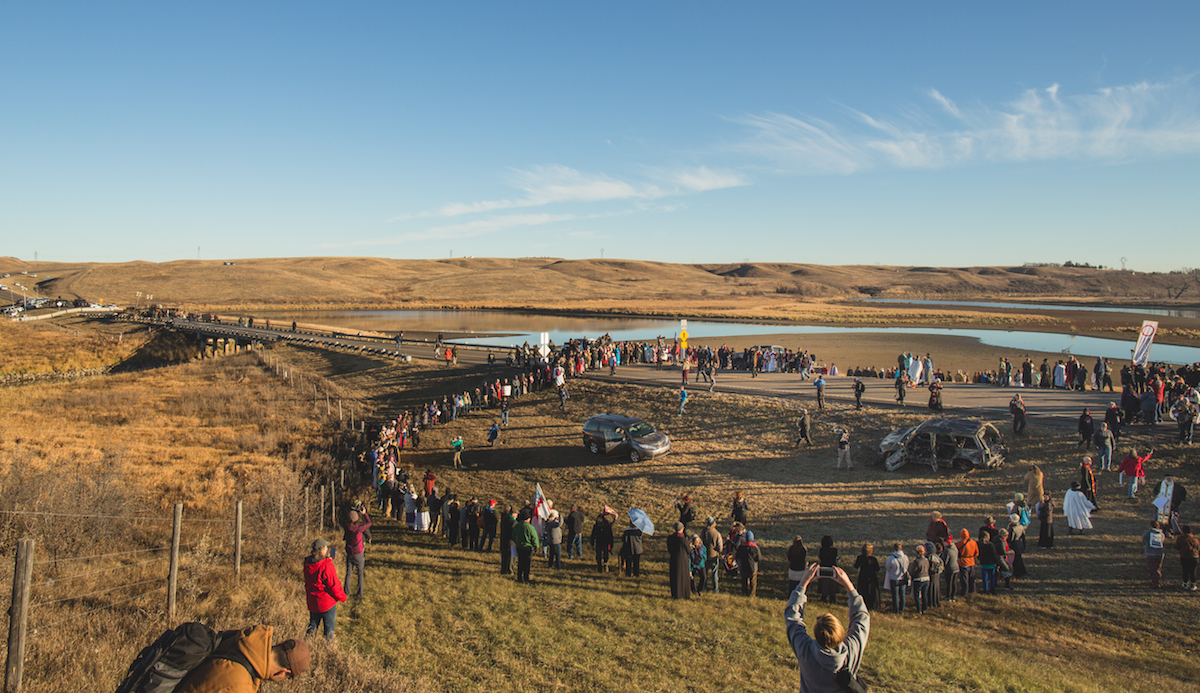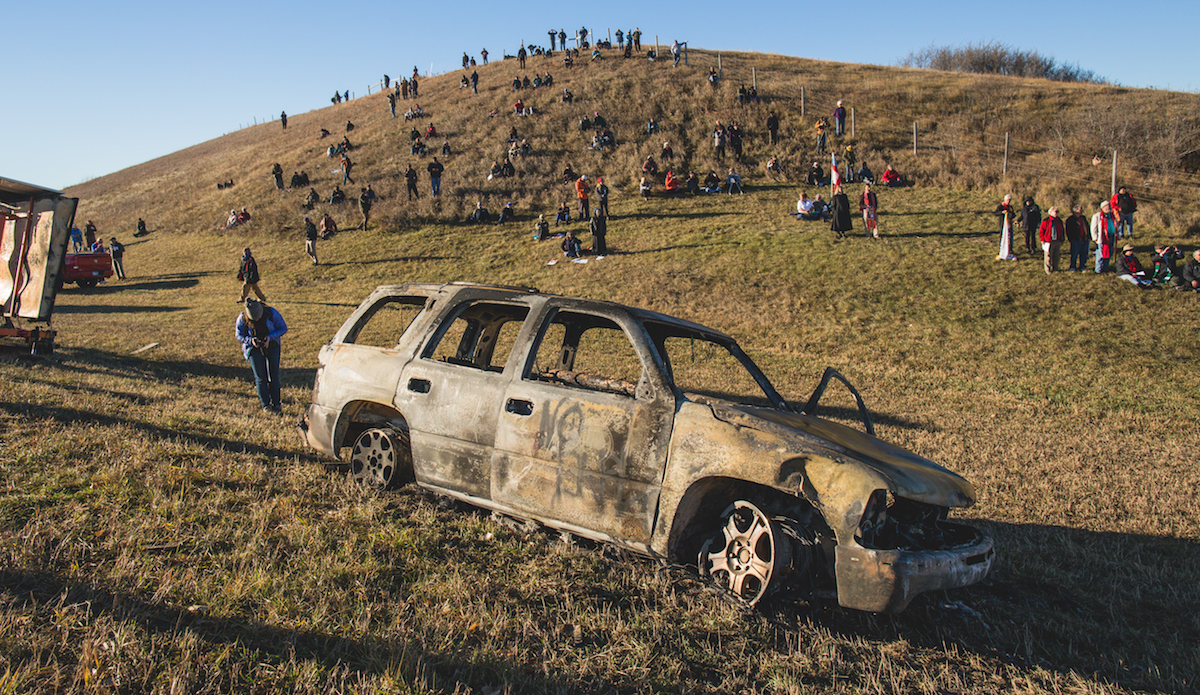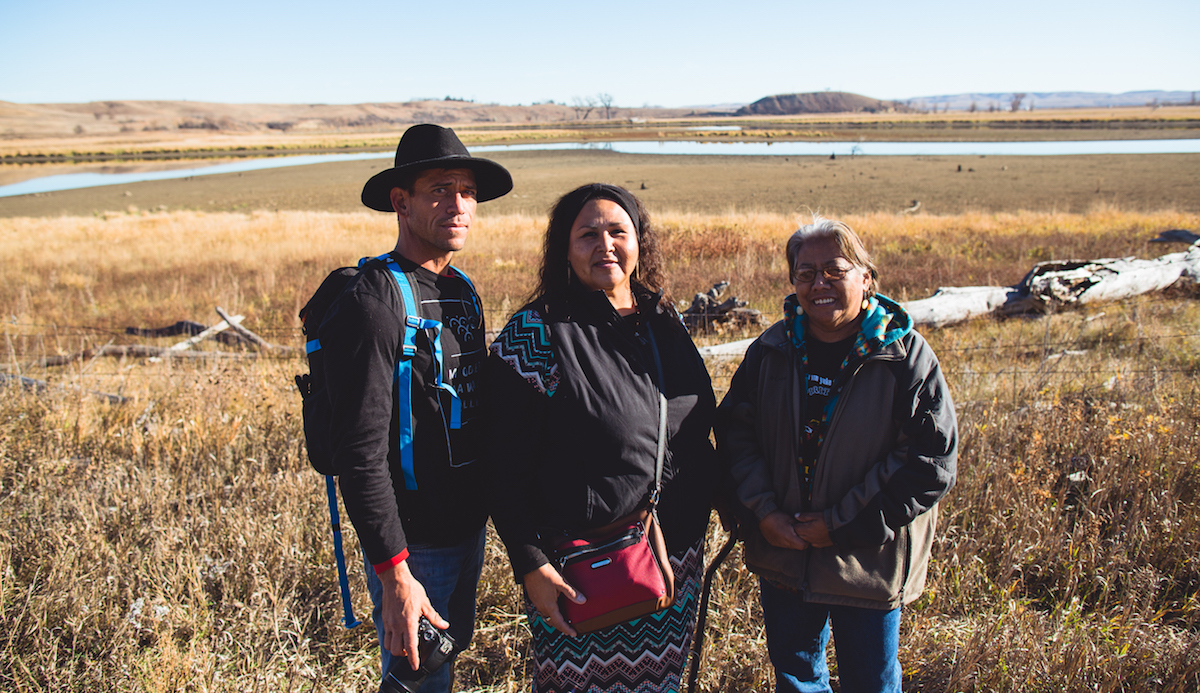A week prior to the U.S. election, Kamalei Alexander, Theo Friesen, Teva Dexter, John Hildebrand, and I traveled to North Dakota, where protests continue against the Dakota Access Pipeline. Inspired by the peaceful protestors that raised over $10k to help support the camp with much needed supplies for the winter, the goal of our trip was to deliver supplies, experience and document the story firsthand, and return home with content to share with media outlets and cultures that would not have otherwise been aware of this extremely important and significant protest.
The Dakota Access Pipeline Project (DAPL for short) is a $3.78 billion project being built to transfer tar sands oil from the Bakken fields of North Dakota, all the way down through South Dakota, Iowa and to Patoka, Illinois where it will join existing pipelines heading to refineries in the Gulf and East Coast. The DAPL could transport up to 570,000 barrels of crude oil per day. The Army Corps of Engineers fast tracked the project’s approval, with the most controversial section of the construction passing below the Missouri river, and across multiple Native American Sioux tribe sacred sites and burial grounds, without discussing the project with the Sioux.
The Standing Rock Sioux says the pipeline crosses directly through sacred sites, including burial grounds, as well as potentially destroying their water source, the Missouri River. The pipeline was originally slated to cross the Missouri River just north of Bismarck, but the citizens and authorities voiced their concern with potentially polluting the capitol’s water supply, so the Texas based Energy Transfer Partners company rerouted further south thru farm land and the nearby Standing Rock reservation.
Protests started last January, and by April, reservation residents and supporters from nearby tribes created a camp to observe the daily construction of the pipeline and to further protest it along the way. By the beginning of September, protests escalated, with a private security firm for the pipeline attacking protestors with dogs and pepper spray. Shortly after, the state declared a “state of emergency,” normally reserved for environmental disasters, which opened up tax-payer funding for outside state police forces and national guardsmen to help act as security for the private pipeline project on private land. This is an unprecedented allocation of funding and resources for a private company, doing illegal and un-permitted construction work on private land, disregarding the Native American sacred sites.
Mainstream media has been almost completely silent about the protests and the project. Dozens of financial institutions who are invested in media companies, are also invested in the pipeline, including Bank of America, HSBC, UBS, Goldman Sachs, WellsFargo and JPMorgan Chase.
This is an unprecedented gathering of hundreds of Native American tribes from across the country that historically have never gathered together in peace, as well as hundreds of non-natives that have come together to protect what is crucial to life and sacred to all, water.
Mni Wiconi, which translates to water is life.
If you are also enraged by the actions of the Energy Transfer Partners construction, their security tactics and disregard for natural resources and human injustices, as well as our government’s lack of intervention, please donate to the Standing Rock tribe directly. Even if you only have $5, it matters. The camp is about to enter extremely cold winter conditions, and is in need of cold weather materials.























